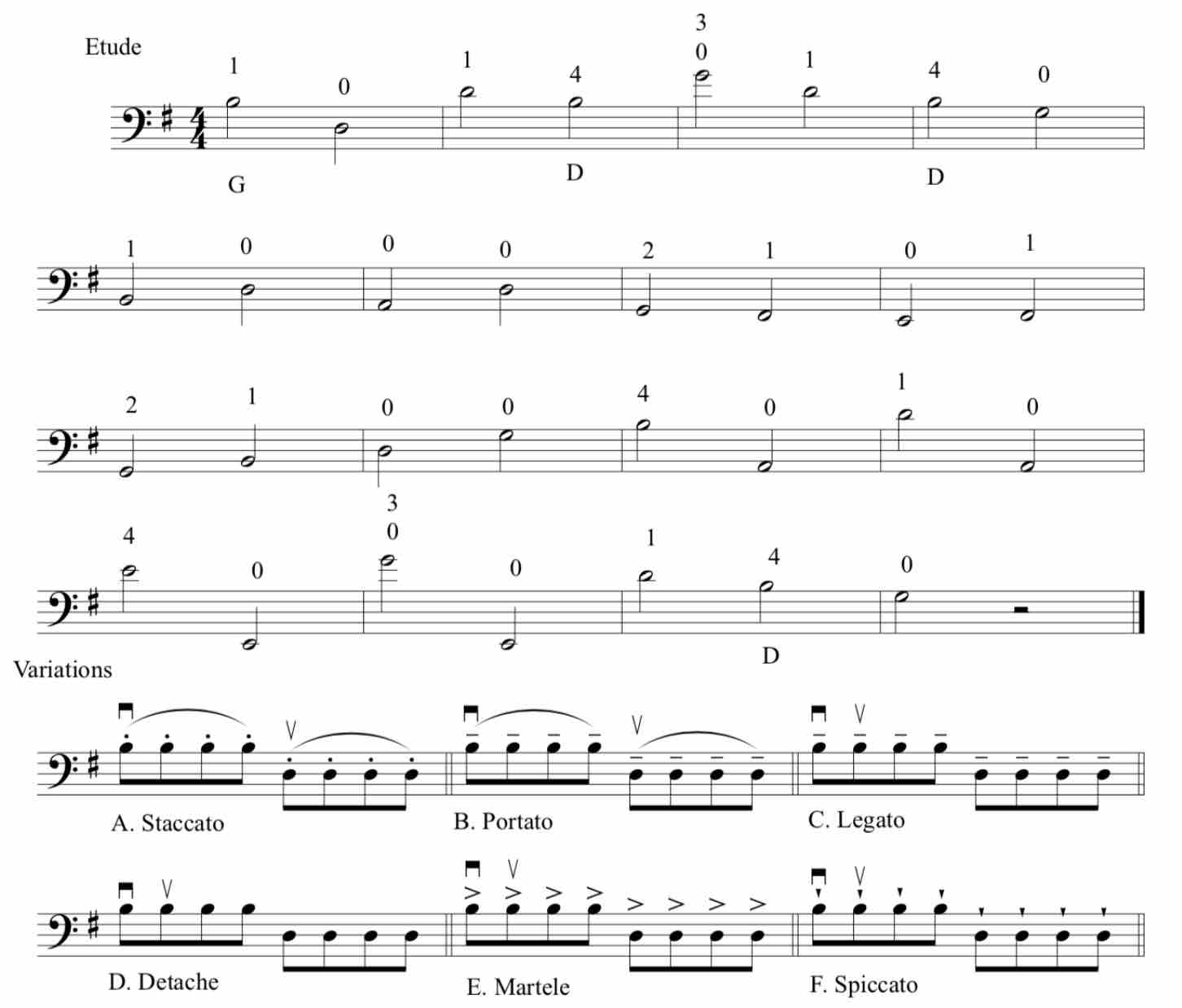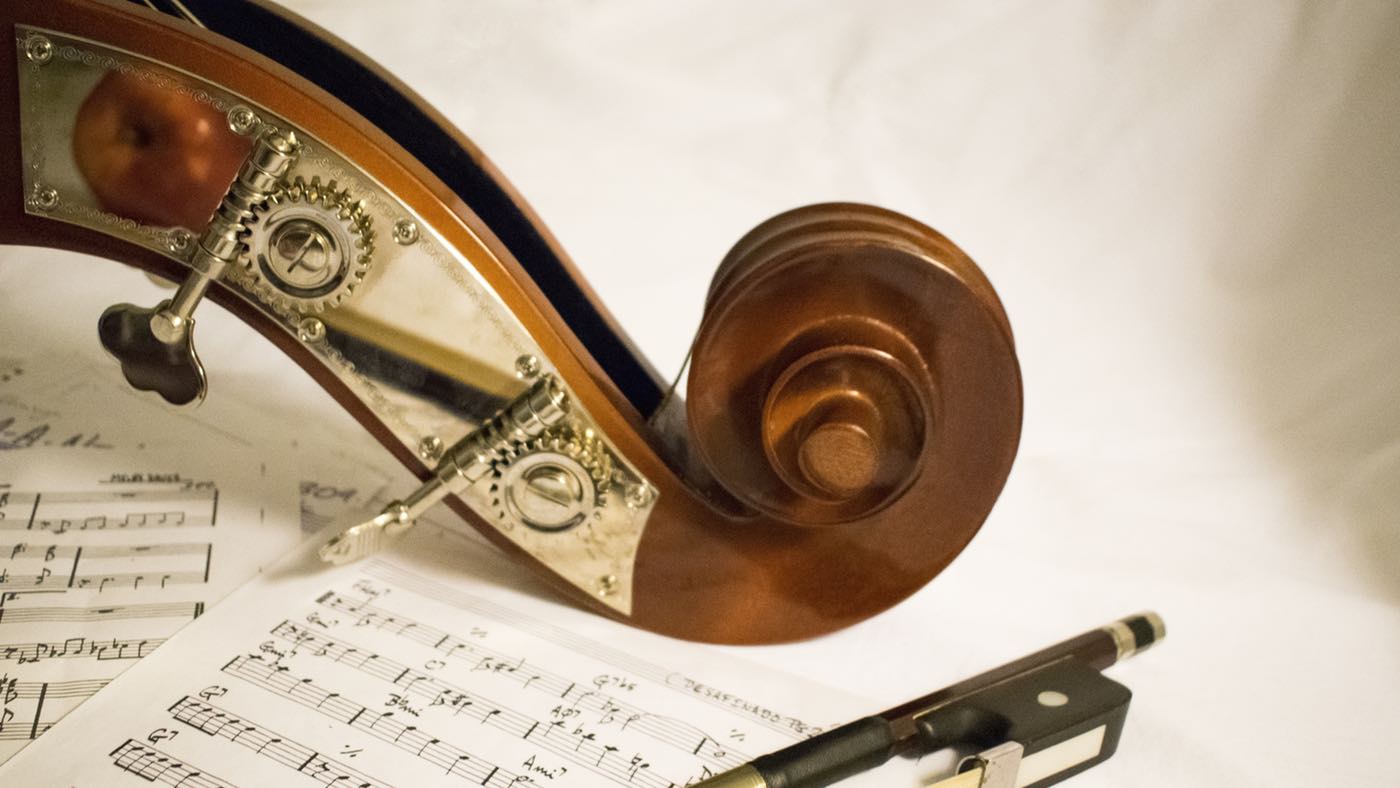Previous: Part 4 – Making Connections
You can download this entire series as an eBook, and you can learn more about double bass technique on our weekly podcast Contrabass Conversations!
Part 5 – Articulations
George Vance includes articulations from the very beginning of Progressive Repertoire, and highlighting these for students from the very first lessons can really help to develop a sophisticated articulation palette.
In addition to what we learn organically through this progression of pieces, I have students practice scales with various articulations.
Staccato Bowing
Doing staccato bowing with four notes per bow is a fantastic exercise on so many levels. It teaches students how to divide the bow precisely, make clean stops and starts in various parts of the bow, and develop consistency of tone throughout the bow:

Portato Bowing
We’ll then work on portato bowing, showing how the mechanics relate to staccato bowing:

We’ll do this on open strings and also over scales.
Legato, Detache, and Martele
After that, we explore legato, detache, and martele playing. I try not to get too geeky with this and keep the strokes as simple as possible. Here’s how I explain it:
1. Legato
Total connection between notes – no discernible space:

2. Detache
A slight re-articulation – I call it “standard bowing” for lack of a better term:

3. Martele
A noticeable bite at the beginning of each note and a slight space between each note:

Bouncing the Bow
I’ll have students experiment with bouncing the bow fairly early in their lessons. We’ll start by letting the bow naturally bounce in the middle of the bow, then start to control it. I try to make spiccato development an organic part of the learning process and revisit it every few lessons in our warm-ups.
By the time we’re learning the articulations we’ve covered so far (which are, of course, all on-the-string articulations), we start to explore different off-the-string stroke lengths.
I’ll start by teaching three basic off-the-string stroke lengths: short, medium and long. I refer to these as Mozart, Beethoven, and Brahms strokes. As I’m demonstrating, I’ll describe the Mozart stroke as a V shape, the Brahms stroke as a saucer shape, and the Beethoven stroke as something in between:

Bowing Variations
Let’s revisit that string crossing etude from the previous section. I’ll have students run through this etude while practicing the various articulations we’ve explored:

Typically, I’ll have students do one type of articulation per lesson, but I’ve also experimented with alternating between two or more with each new bar. Have fun and explore, and you’ll be well on your way to helping students develop a rich articulation palette!
Next: Part 6 – The “Daily Dozen”
Remember–you can download this entire series as an eBook, and you can learn more about double bass technique on our weekly podcast Contrabass Conversations!
Bass News Right To Your Inbox!
Subscribe to get our weekly newsletter covering the double bass world.

